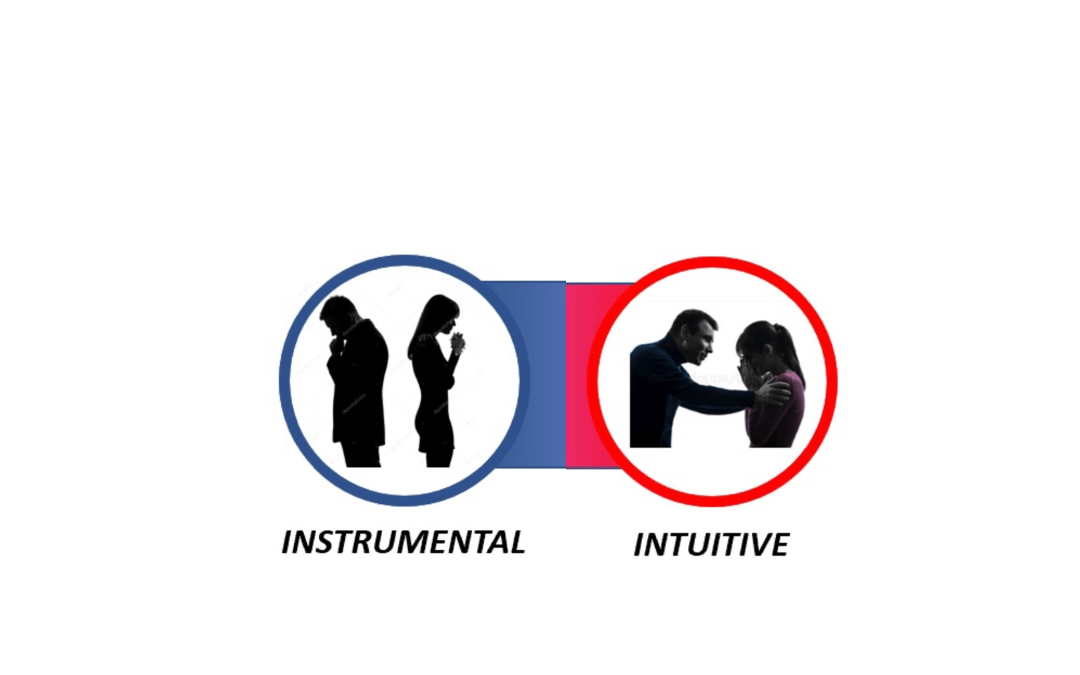But understanding our own style of grief and that of those who share the pain of our losses is important to our well-being. If we fail to understand those differences, we could assume that those fellow survivors aren’t grieving . . . or aren’t doing it right. We could distance ourselves from the connections we need most on our own grief journey, and they on theirs.
Kenneth Doka and Terry Martin have delved deeply into those stereotypical grief models (masculine and feminine) and developed their own model of styles of grief that transcends that limited view1.
Doka and Martin initially focused on exploring the differences between women and men in grief. Research and clinical observation indicated that women and men do tend to grieve differently . . . statistically. Some women exhibited a more masculine pattern of grieving and vice versa. They designated the feminine style “Intuitive” grievers and the masculine style “Instrumental” grievers, based on the characteristics of each.
Intuitive grievers experience their grief as very intense waves of emotion. Their feelings are very strong and expressed like “an open book”. Intuitive grievers cope and adapt to death by exploring and processing feelings. The benefit of “working through” feelings to facilitate healing makes intuitive grievers quite good candidates for support groups.
Instrumental grievers are less “feeling-based”; they experience their grief more cognitively and physically. They tend toward inward reflection, thinking about all aspects of the loss as well as attempting to problem solve to adapt to the new normal. Instrumental grievers typically cope in behavioral ways, for example building something to memorialize or pay respect to the deceased.
Even that model is too simplistic. Doka and Martin perceived that the two grieving styles, intuitive and instrumental, are actually extremes on a continuum. In other words, the great majority of grievers exhibit “a blend” between the two styles, i.e., have characteristics of each. They went on to say that neither style is by definition superior to the other and that each has aspects that facilitate healthy adaptation to the loss.
I have observed, in myself and those I’ve companioned, that, while we all have preferred positions on that continuum, our styles can change. Depending on the circumstances: where we are on our individual journey, who we are with in the moment, what unfolds in our life – we adapt.
Our guiding principle at EricsHouse is that each of us has a right to our own style of grief and our own pace of grieving. No one but you is as expert in your grief. But we heal by expressing our grief (mourning) in connection with a compassionate listener. Sometimes that person will have a very different grieving style. If we can bridge our differences in how we grieve with those who share our deepest pain we may find our most important connections for healing . . . and help them heal, too.
On a side note – you can probably guess where I fall on this continuum just based on the fact that I wrote this article.
1 Grieving Beyond Gender: Understanding the Ways Men and Women Mourn, 2nd Edition, by Kenneth J. Doka and Terry L. Martin




Recent Comments